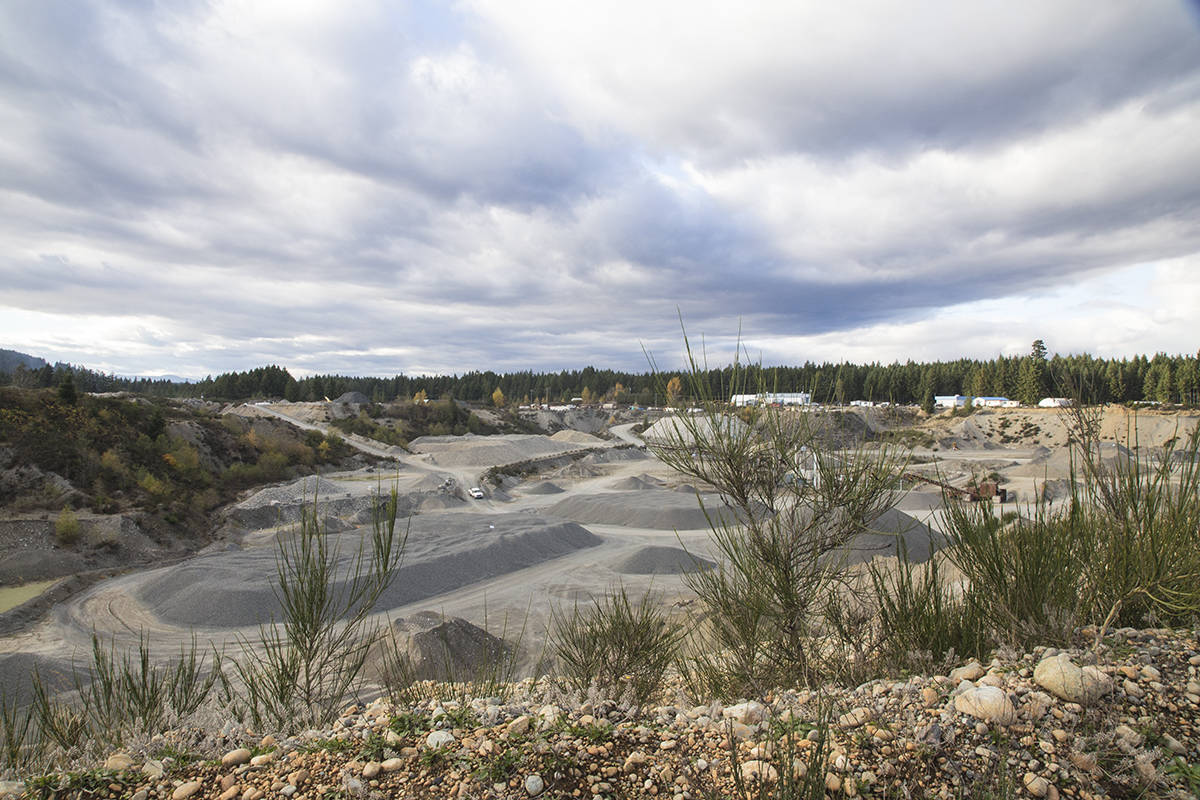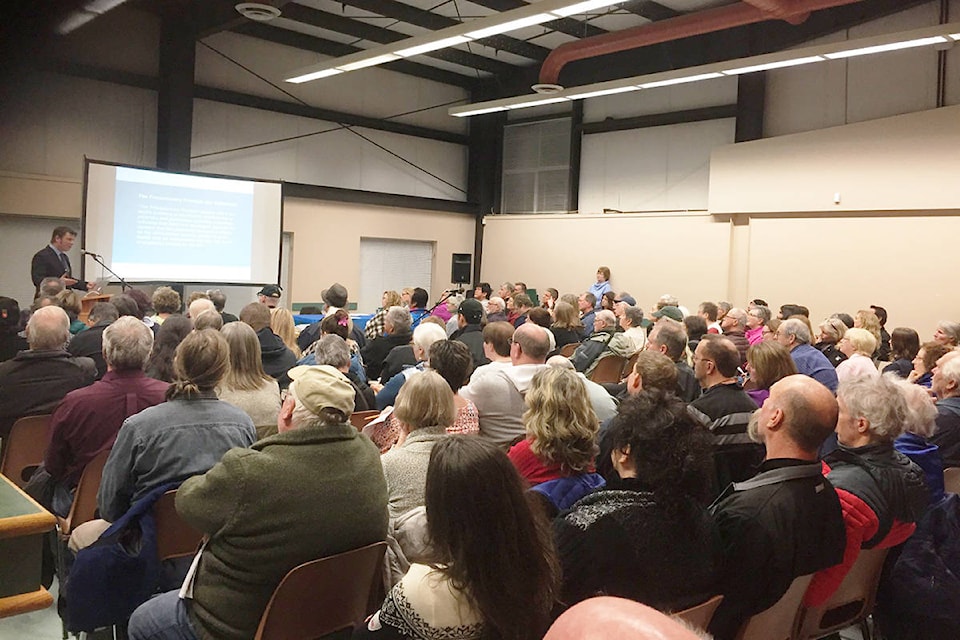For the last four years Leona Adams and the Campbell River Environmental Committee have been fighting to protect Campbell River’s drinking water from a landfill facility.
On Thursday the committee continued that fight by presenting their concerns at a community information meeting.
Adams, president of the committee, wants the same thing she wanted in 2014, when Upland Contracting Ltd. first proposed building the facility: caution.
“CREC is still saying ‘we have two hydrogeologists telling us there is not enough information to say that it won’t be a risk and until there is enough information to say it won’t be a risk than it shouldn’t go ahead,’” Adams said.
Upland is currently operating on a permit that was issued June 1, 1992 by the Ministry of Environment, Lands and Parks at their site located across Highway 28 from McIvor Lake.
The permit states “the type of refuge which may be discharged is inert municipal.” It goes on to say, “The components of the refuse which may be discharged are stumps, trees, land clearing waste, selected building demolition debris, and residue of combustion from the open burning of wood waste.” It further clarifies that no waste that can decay can be discharged at the site.
Under this permit, creosoted logs and other waste have been buried on Upland’s property – waste has also been burned.
They have applied to upgrade from their landfill permit to a landfill operational certificate and are proposing they expand their landfill operations from the current 3,200 cubic metres of waste per year to a capacity of 500,000 cubic metres over a 20 year site life.
Along with that operational certificate, they are planning on modernizing the facility to meet the ministry’s requirements and accept clearing debris, construction and demolition debris and waste soil.
Their proposed upgrades include a leachate treatment system.
However, the site is across the highway from McIvor lake, and Adams claims there are risks to the groundwater, an aquifer and salmon bearing streams in the area should the facility upgrades and certificate be approved.
“There must be zero per cent risk when you are putting waste beside our drinking water,” Adams told the Campbell River Mirror last November. “There is no other drinking water for the 35,000 people that live here.”
Dr. Gilles Wendling has agreed with Adams that more research needs to be done before the company proceeds with their plans.
Wendling is the president of GW Solutions and a senior hydrogeologist with 30 years experience in hydrogeology consulting and a doctorate in hydrogeology.
He presented his observations and concerns to the community on Thursday, based on the report he produced for the committee last November.
Wendling identified a possible east/west groundwater divide under the Upland’s site with a west flow to Rico Lake, which flows into McIvor lake, as well as an east flow to Cold Creek, the Quinsam River Hatchery and the Quinsam River.
He also claims that Upland’s property sits atop a large aquifer and that any seepage or leakage from the landfill will flow out to the surrounding environment.
The committee is also concerned about leachate that contains sulphate, chloride and manganese that are identified as not treatable.
With Campbell River’s supply of drinking water right next door, the committee and Wendling are calling for more research to ensure the environment and our water continues to be protected.
Terry Stuart, of Upland, also attended the community meeting and he said he was pleased that there is so much interest in the project as it is important that the community fully understand Upland’s proposal.
“There needs to be that level of comfort with what we are proposing that only accurate information can satisfy and that we are working closely with the [Ministry of Environment] to address all these questions,” he said in an email.

